Memorable encounters with Mammals: Part I
Most birdwatchers enjoy seeing mammals, but the trouble with mammals is that they tend to be much more challenging to see than birds. Only in Africa is it really easy to see a big variety. I remember the guide on my first Kenyan birding safari remarking that “birding groups always see far more mammals than those who come just to see animals. They invariably spend longer in the bush, and look at everything that moves, so it’s hardly surprising that they see more.” On my 21-day Kenyan safaris we reckoned to find around 600 species of birds and around 60 mammals, both impressive totals. One of my most memorable outings was a night-time game drive in Kenya when we saw an aardvark and a zorilla, so we ticked off both the first mammal in the field guide’s index, and the last. We also saw a leopard, but it was the A to Z that sticks in the mind. Incidentally, encounters with both aardvarks and zorillas are rare – it’s much easier to see lions and leopards.
In contrast to East Africa, encounters with mammals while out birding in Europe are relatively few. In 2023 I attempted to keep a year list of mammal encounters: the list barely exceeded 20 species, while it became complicated by seeing bats and voles that I was unable to name specifically. As someone who likes to name everything I see, I found this frustrating.
Over the years, though, I have enjoyed a number of memorable mammal sightings in Europe. One of the most exciting was an encounter with an Iberian lynx while walking in Spain’s Coto Doñana. At the time (1968) sightings of lynx in the Doñana were extremely rare as the animals were so shy: I was extremely fortunate to have this encounter. (I recall seeing my first-ever Little Bustards and Pin-tailed Sandgrouse on the same walk on the edge of the Marismas.) It was more than 50 years before I was to see another lynx, not in the Doñana, but in the Sierra Morena mountains to the north, which is now the best place to see these handsome cats in the wild.
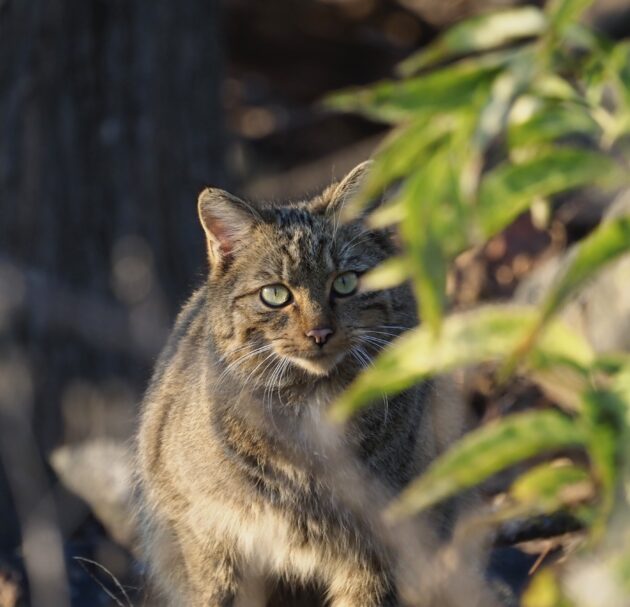
I’ve had a few encounters with wild cats, too, in both France and Greece. These cats are quite numerous around Lake Kerkini in Northern Greece, and I’ve encountered them there several times, including the individual above that allowed itself to be photographed. In recent years golden jackals have become well established around the lake, but they are shy and largely nocturnal, and I’ve only had one daytime encounter. Stay out after dark, though, and there’s a good chance that you will hear them, for they are noisy creatures. I wonder how they get on with the wild cats?
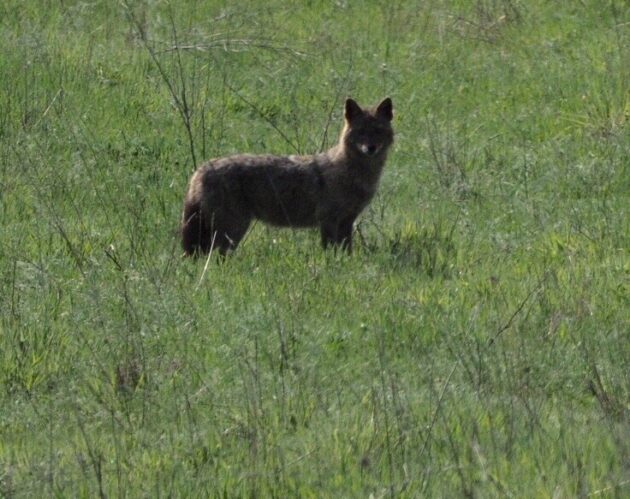
Golden jackals are on the increase throughout Eastern Europe, and spreading steadily west. Some years ago I was surprised to see one while birding in Matsalu National Park in Estonia. It must have been one of the first to reach Estonia, but I gather that they are now well established there.
I’ve never been lucky enough to have seen a wolf anywhere in Northern Europe, though last year I did find fresh tracks in Estonia – their prints are impressively big. My only wolf sightings have been in Spain, in December, and at great range. I viewed them at dusk, through a telescope, from a ridge overlooking the area they were hunting. It was an exciting experience, though a remarkably chilly one, as winters in Castile and León can be very cold. On another trip, this time to Slovakia, I heard wolves howling, a wonderfully spine-tingling sound. At the time we were looking, without success, for White-backed Woodpeckers.
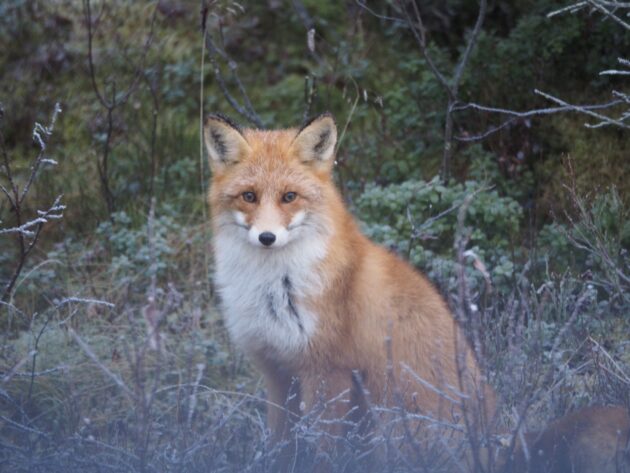
I may not have seen many wolves, but I have seen lots of foxes (or what I should perhaps call red foxes). They are common and widespread here in the UK, though relatively scarce where I live as numbers are controlled by shooting. (Keeping fox numbers down certainly benefits our local ground-nesting birds, especially Stone Curlews and Grey Partridges.) I’ve also seen foxes in many other countries. The Finnish fox shown here was photographed late on an October afternoon, north of the Arctic Circle. My shutter speed was slow, so it’s not the sharpest of photographs. This northern fox really does look red, unlike the pale, sandy-coloured animals I saw in Georgia in 2019 (below).

I’ve never been to Svalbard, so I haven’t ticked off polar bear, but I have seen brown bears on a number of occasions in both Romania and Bulgaria. My first sightings were on a rubbish tip not far from the town of Brasov in Transylvania. The mountains here have a strong population of these impressive carnivores, and they find rubbish tips irresistible. However, watching bears on tips isn’t really much fun, and I’ve had much more satisfactory sightings from dedicated bear hides, both in Transylvania and Bulgaria.
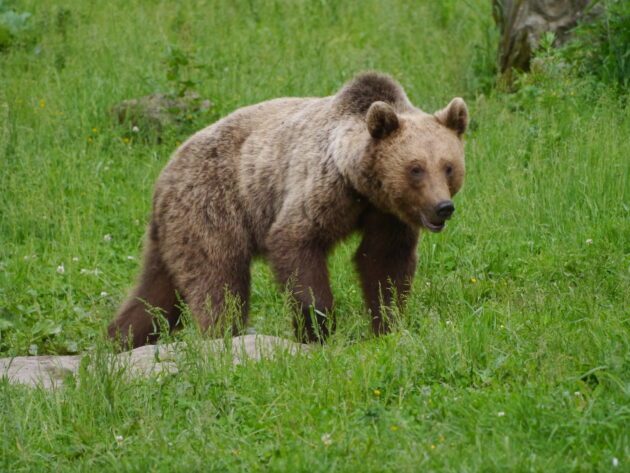
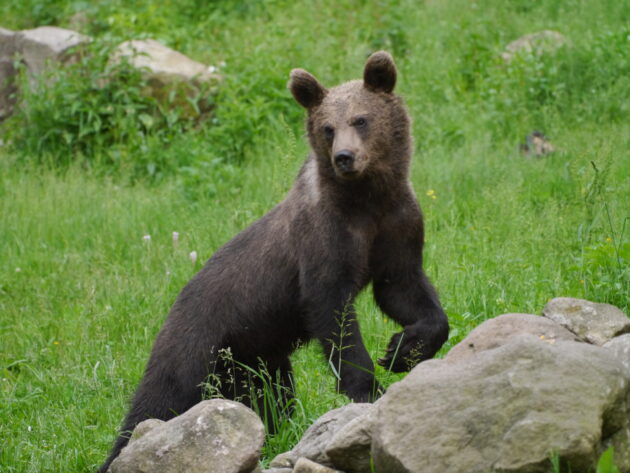
There are some bear hides where sightings are virtually guaranteed, as the area in front of the hide is heavily baited to ensure the bears (above) come every night. (They particularly like chocolate!) I’ve also sat for hours in unabated hides in Bulgaria where it’s a matter of luck whether you see a bear or not. On one occasion we settled into the hide at 6.30 in the evening. We were told we had to be silent, so nobody said a word for over three hours – the only bear we saw appeared at 9.30, just as it was getting dark. However, we did see some interesting birds, including a Nutcracker (below), a lifer for one of my companions.
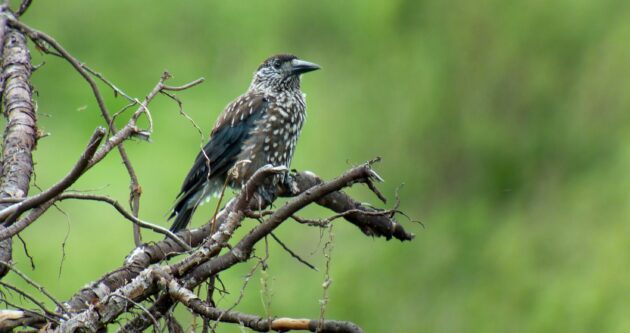
Otters may be widespread in Europe, but they are usually elusive and difficult to see. They disappeared from most English waterways 50 years ago as a result of poisoning from persistent organochlorine chemicals, but in recent years they’ve staged a remarkable comeback, and they are now widespread. Where they aren’t persecuted they can become bold, and can be seen during the day. The individual (below) was photographed on the Little Ouse river, the border between the counties of Suffolk and Norfolk, at 10.30 in the morning. It appeared to be unconcerned at me and my spaniel watching it from a footpath by the river.
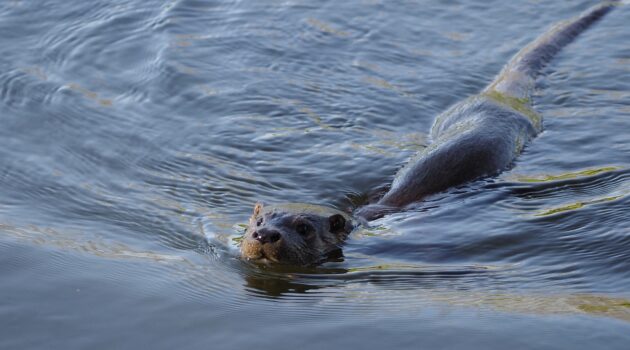
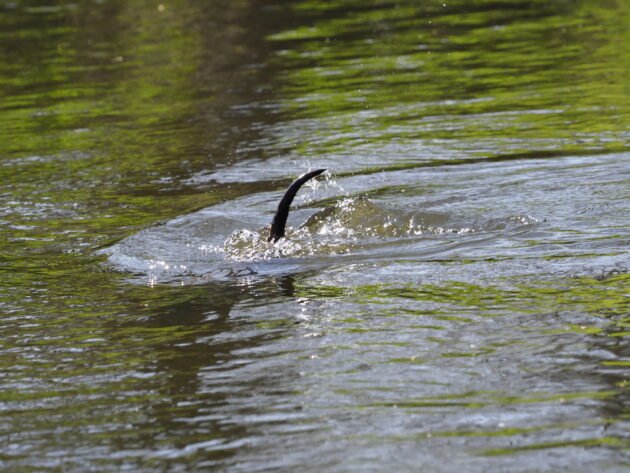
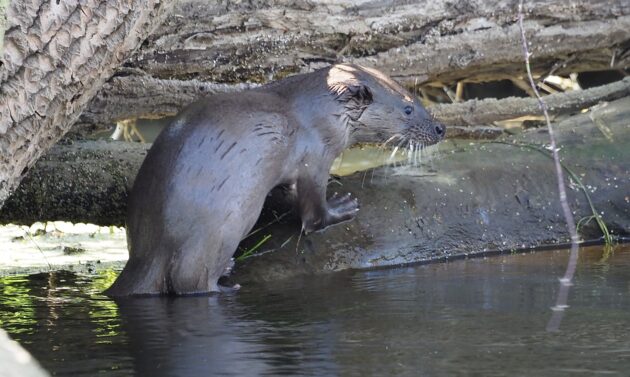
The otter is, of course, a member of the weasel family. (Why the weasel should be the head of the family doesn’t really make sense. Why not the stoat family or the badger family?) I see both weasels and stoats occasionally, but never regularly, and have yet to photograph either of them satisfactorily. The same goes for the badger, an animal that has become much more numerous and widespread in Britain in the last 50 years. Sightings of squashed badgers by the side of the road are much more common than seeing live individuals, unless you make the effort to watch a sett.
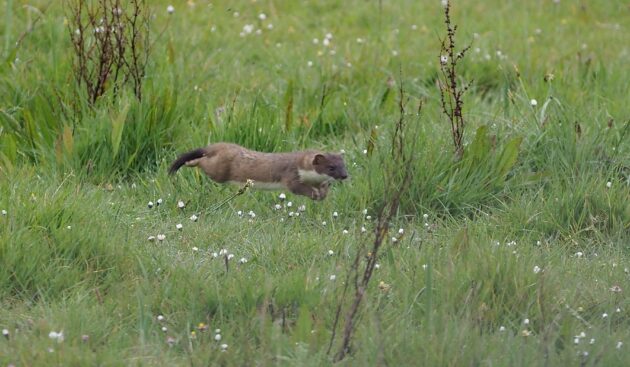
The North American mink is another member of the weasel family, and an unwelcome invasive species here in Britain. Mink are voracious predators, and responsible for the huge decline in water voles in the UK. They will also kill any water birds they can capture, from Kingfishers to Mallard. I’m pleased to say that it’s a long time since I last saw one: there has been a determined effort to eradicate them from East Anglia, the part of England where I live, and it’s been largely successful. Some years ago I watched a mink and an otter feeding close to each other on the Scottish island of Mull. Interestingly, they totally ignored each other.
Pine martens are making something of a comeback in the UK, helped by reintroductions, and are now established in the New Forest, in the southern county of Hampshire. I’ve yet to see an English pine marten, but I once watched one hunting red squirrels in the Bialowieza Forest in Poland. The hunted squirrel ended up climbing to an outer branch of a pine tree, where it was relatively safe as the branch wasn’t stout enough to support the weight of the marten.
We don’t have stone martens in Britain, and my sightings on the Continent have been few. The most memorable was one walking by the side of a French country road early on a February morning. There had been a hard frost and the temperature was several degrees below zero: the marten didn’t look happy, and I can’t say I blamed him.
Next week David looks at further mammal encounters, but herbivores rather than carnivores.
Source link
Facebook
Pinterest
Twitter
LinkedIn

